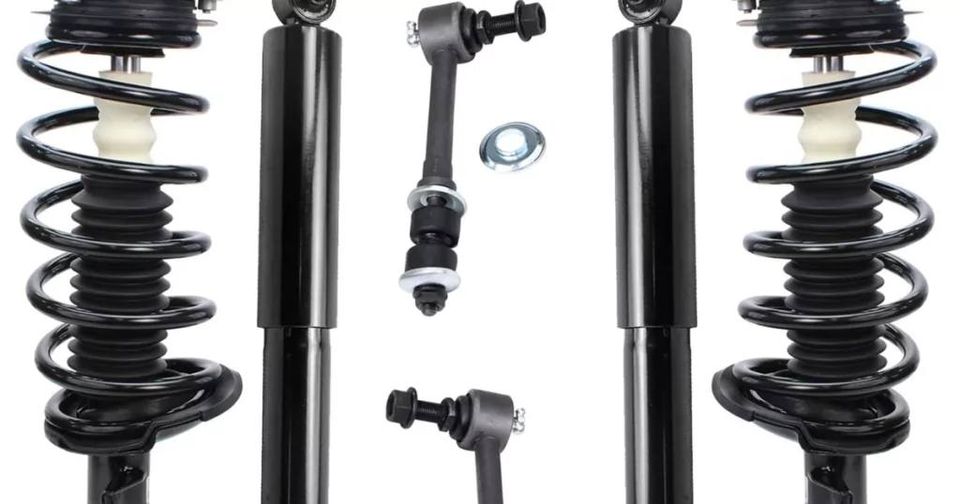5 Symptoms Of a Bad Strut And Shock:

1. An Oil Spill
When everything functions as it should, the hydraulic fluid inside your car’s struts won’t leak out. Bad struts can cause oil to seep from the casing, a sure sign that something is wrong.
Seals wear out over time, which causes oil to leak. Oil tends to collect on the exterior of the strut rather than falling to the ground. Check for an oily buildup by feeling the strut to see if it leaks.
2. Lack of Uniform Tire Wear
Damaged struts affect how the tires interact with the road. The tread might wear unevenly if the tires no longer make full contact with the road. Tires with worn struts may have a ‘cupped’ appearance.
As a result of this cupping, the tread has several different low and high points. As the tires roll up and down on the road, this happens. Not replacing worn struts might lead to the need for new tires, which can significantly increase the total cost of repairs.
3. Reduction in Efficiency
In addition, various performance decreases will become apparent in the convenience factor. Vehicles with worn struts may squat or dip during acceleration or braking. As you switch places, you could even start to lean. The steering will become less precise as the strut bearing wears.
When this happens, turning can be challenging, and the sensation of responsiveness might decrease. Any time your vehicle’s handling or steering ability is compromised, you increase your risk of an accident.
4. A Bumpier Ride
The struts in your car’s suspension work to absorb the shock of bumps on the road. Thus, if the struts aren’t up to par, your level of discomfort will rise. You will become more aware of the shifts when traveling over bumps or other road imperfections.
If left unchecked, the deterioration of the struts will reach a point where they will bottom out. The spring has reached its limit of compression and has broken.
5. Freaky Sounds
Struts may begin to create noise as they deteriorate. You can’t count on it, but there’s a chance you’ll hear a pounding or hollow clunking noise, especially when traveling over bumps.
It’s possible to detect sounds when you move the wheel due to the connection between the front struts and the steering knuckle. When you turn, the car may make more noises like cracking and clunking than usual.

 Loading..
Loading..